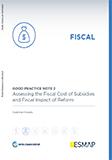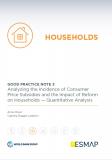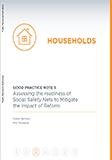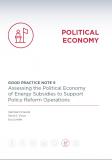Publications
The Kuyasa project is an energy efficiency retrofit initiative launched in 1999 for 2,309 low-income houses in the outskirts of Cape Town, South Africa. Through the installation of solar water heaters (SWHs), ceiling insulation, and compact fluorescent lamps (CFLs), the project has been able to save 7.40 million kWh (34 percent) and 6,437 tons of CO2 emissions (33 percent) on an annual basis—representing an aggregated savings of 155 million kWh and 135,187 tons of CO2 emissions. Further, the insulated ceilings resulted in improved thermal comfort and improved indoor quality inside the houses as residents were able to almost eliminate the need for paraffin oil heaters. Residents reported cost savings from reduced paraffin and electricity use. The project partners actively engaged the Kuyasa residents for implementation of the retrofits and, as a result, the community benefitted immensely through technical training and capacity building for residents, job creation and an enhanced sense of ownership and responsibility.
The project planning effort took three years (1999-2002) and was a collaborative effort of the City of Cape Town, a Dutch nongovernmental organization SouthSouthNorth (SSN), and the residents of Kuyasa. The project model was piloted in ten houses and the successful implementation of the pilot project was used to register the project as a Clean Development Mechanism (CDM) with the United Nations Framework Convention on Climate Change (UNFCCC). The majority of the funds for the project came from financial grants from the multiple government entities. The main source of revenue for the project was the sale of Certified Emission Reduction (CER) credits under CDM, which will generate a total of US$3.08 million (R21.8 million) over the 21-year crediting period for the project. The residents of Kuyasa also made small monthly contributions (US$0.35; R30) toward the project over a three-year period—totaling US$0.35 million (R2.49 million).
The Kuyasa project demonstrates how energy erfficient interventions in low-income communities can be successfully implemented and result in the alleviation of complex problems such as poverty, economic growth, unemployment, increase in energy access and supply, and environmental sustainability. The project also demonstrates how an international mechanism such as the CDM is a viable mechanism that can be leveraged for poverty alleviation and sustainable development.
ESMAP. 2011. Good Practices in City Energy Efficiency: Cape Town-Kuyasa Settlement, South Africa - Low-Income Energy Efficiency Housing Project. ESMAP Energy Efficient Cities Initiative. Washington, DC: World Bank.




